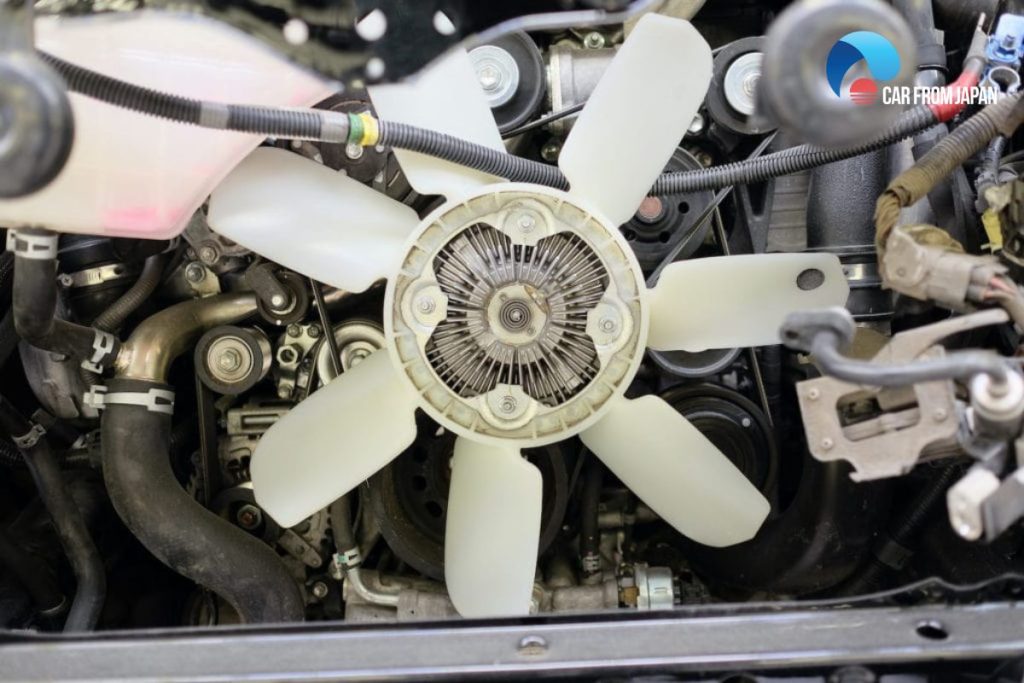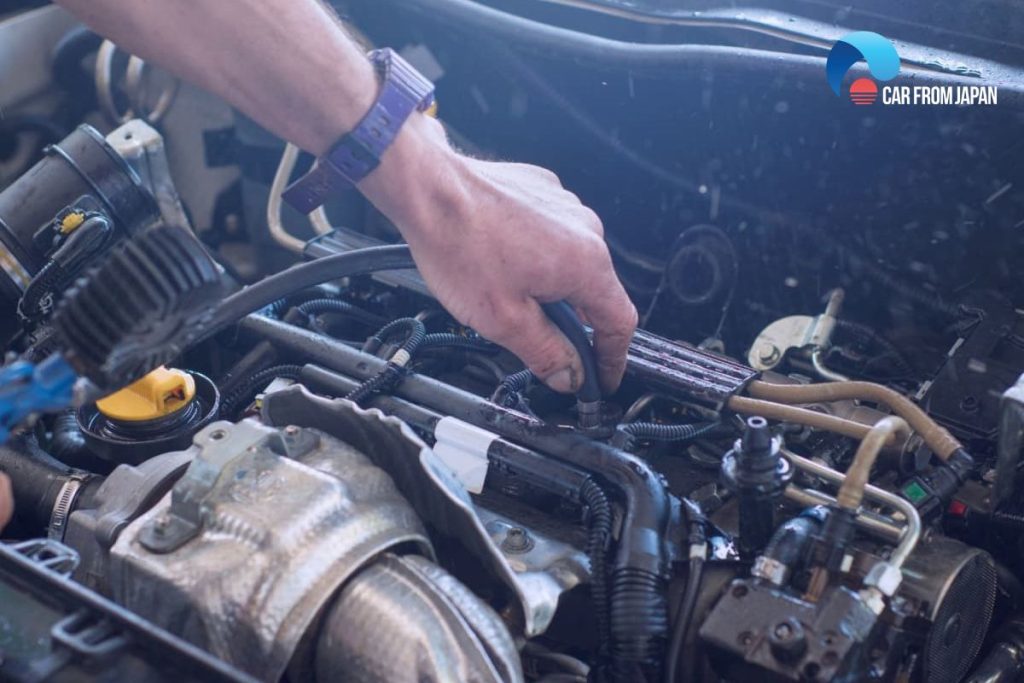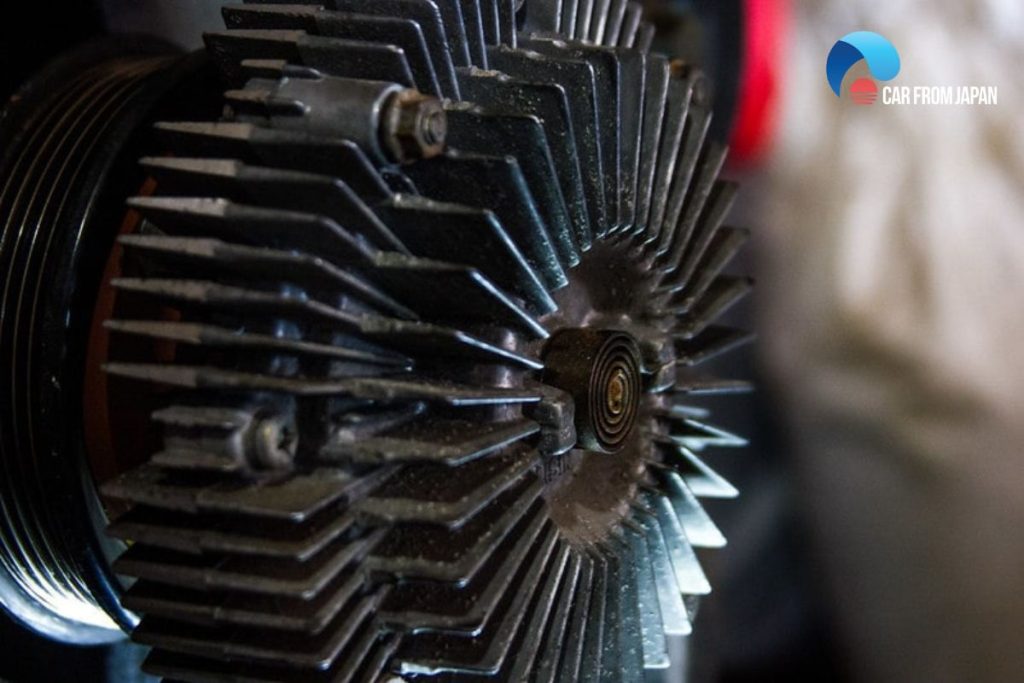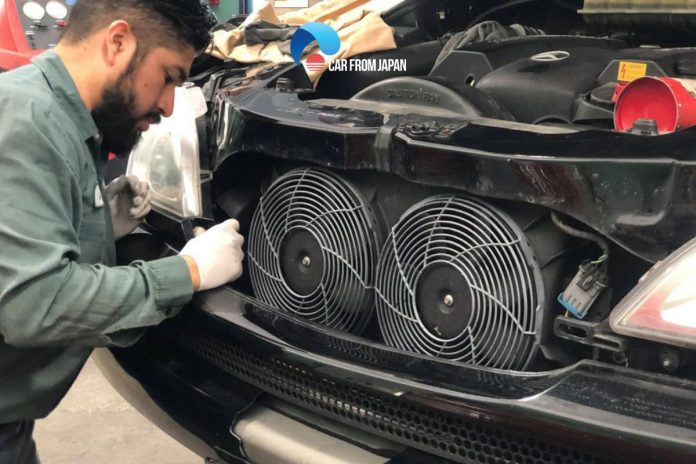Do you know, the longer you leave a bad fan clutch in your car engine, the more serious engine problems can crop up?
Although a fan clutch is just a small part of the motor (sometimes, this component is easy to overlook during the maintenance process), we can’t deny its important function – to help control the temperature zone in your car engine.
A broken fan clutch can leave you stranded with expensive repair bills. To save this cost, check the common symptoms below to gain more knowledge about this essential part.
Contents
- What Does A Fan Clutch Do?
- 4 Symptoms Of A Bad Fan Clutch
- How To Test A Clutch Fan?
- How To Replace A Fan Clutch?
- FAQs on Symptoms Of A Bad Fan Clutch
- Can a bad fan clutch cause a whining noise that goes away when driving fast?
- Why does my engine overheat in traffic but cools down on the highway?
- Is it possible for a faulty fan clutch to damage other engine components?
- Why does my fan keep spinning fast even after I turn off the engine?
- Why does my fan roar louder in the morning and quiets down later?
- Does fan clutch failure show up in diagnostic tools or OBD scanners?
- Conclusion
What Does A Fan Clutch Do?
When talking about the cooling system in your car, the first thing you can think about is a cooling fan or a radiator.
The overlooked fan clutch doesn’t have attention, but it’s an essential component in the operation of the cooling fan.
It keeps your cooling system working efficiently and your engine performing efficiently. So what is a fan clutch? A fan clutch is a thermostatic device, its responsibility is.
- Close and disconnect the connection between the cooling fan and the water pump shaft
- Perform the engine cooling function
- Prevent the engine from overheating
- Avoid unpredictable consequences.
The fan clutch rotates loosely until the temperature in the engine reaches a specific temperature, matching the clutch, and at the same time, your fan will work more efficiently.
This means that when the engine cools down, the cooling fan system will spin slowly (which saves fuel and energy for the engine). And when the engine is running (heats up), the fan will rotate at a higher speed to increase cooling capacity.
There are basically two types of fan clutches, non-thermal and thermal you can choose. But normally, non-thermal clutches are less common and operate continuously at 30 to 60 percent engine rpm.
They are less expensive but less efficient, taking power from the engine and reducing fuel economy.
In general, it can be said that the fan clutch is a fairly dependable part, but sometimes the fan’s clutch will fail, and below are the symptoms.
Related Post: How a Fan Clutch Works in a Car

4 Symptoms Of A Bad Fan Clutch
The function of the fan clutch significantly contributes to the overall performance of your engine. Therefore, it will be very dangerous if this part goes bad.
However, the good news is the signs that the clutch fan is damaged or faulty are usually quite obvious which we can notice visually.
How to tell if fan clutch is bad? Here are some warning symptoms your fan clutch needs to be replaced.
Engine overheating
Overheating is one of the first common symptoms of a bad fan clutch. Most drivers think engine overheating is due to a lack of coolant or a bad radiator, but a lot of people don’t know that a failing clutch could cause the engine to overheat.
For this reason, many drivers will try to fix overheating by adding coolant to the radiator. However, as we all know, the main responsibility of the fan clutch is to control the operation of the cooling fans.
A faulty fan clutch may lose its function, and as a result, disable the fans or prevent the cooling fan system from reaching maximum efficiency.
Reduction in performance
The most common problem that causes the cooling fan clutch to fail is that the clutch is stuck and does not operate. This causes the fan to always spin with the water pump shaft.
Although this condition does not cause the engine to overheat, it will reduce engine power because the engine does not reach its optimal temperature.
At that time, it can cause excessive engine drag, ultimately causing reduced power and fuel efficiency. One of the most obvious signs you can see in this case is a significant drop in acceleration, power, and fuel economy.
Noisy from the cooling fan system
Sometimes, drivers will hear the sound such as roaring or clicking when their engine is running or turning the A/C off.
Squealing sound can be caused by a number of reasons, including poor wheel bearings, worn tires, or a low-oil differential.
Usually, it’s the fan’s clutch. When the clutch shoe is stuck, it cannot be removed. The consequence is the fan is locked on the input shaft.
When the fan is locked, the cooling fan will work permanently. You will hear the loud engine sound due to the fan spinning at full speed. Which is caused by the fan clutch stuck in the installed position.
In addition, sometimes, broken clutch fan blades are also a cause of sound in the cooling fan system. In this case, you can open the hood and check the fan (when your engine is off).
If you find any damaged propellers, the fan clutch should be replaced as soon as possible.
Read More: Car Radiator Fan Not Working: Troubleshooting 6 Common Problems
A cooling fan is continuously spinning
Like distributing the oil intermittently, the clutch can also stick on open, creating a permanent bond between the engine and the radiator.
If you notice that your cooling fan still keeps spinning after the engine is off, it may indicate some issues with the fan clutch. Usually, leaking silicone fluid is the main reason causing this problem.
This fluid is controlled by the valve system following the regulation of the fan clutch. When the fan clutch is going bad, it will lose control and liquid will still be poured out as hot air enters causing the fan to spin.

How To Test A Clutch Fan?
If you suspect there are some problems with the fan clutch, it’s necessary to test the condition of your fan clutch. There are some methods you can do such as.
- Detecting unusual noises while driving
- Checking for oil leaks or physical damage
- Identifying the amount of resistance provided by the blades
As we know, the common signs of a bad fan clutch in the first stage is the inability to cool the air circulating through your car appropriately.
Turn on the A/C and move it down to the coldest setting. If it doesn’t cool down after a few minutes or seems to emit warm air abnormally, there may be a problem.
You can detect a clutch fan symptoms by running the engine until it warms up. When starting the engine you should observe the fan speed.
If the fan rotates freely when your engine cool downs and does not accelerate when the engine temperature rises to normal, the clutch has failed.
Another method, you can do in this step: After heating up your engine then turn off and open the hood.
Try turning the blades, if it takes a great amount of force to spin the fan, the clutch is normal.
However, if the fan rotates lightly and loosely, this proves that there is a problem inside the fan clutch that needs to be fixed.
Fan clutch replacement is an important action to avoid overheating the motor. This problem will also affect the operation of the air conditioning system due to the lack of air in the condenser.
How To Replace A Fan Clutch?
How to replace a fan clutch? This is one of the most frequently asked questions on Google about fan clutches.
When your clutch fan starts to show signs of wearing out, you should make it one of your top maintenance priorities and replace it immediately.

Here are the detailed steps:
Step 1: Remove the fan clutch
After identifying the exact problem that causes the broken fan clutch. You will need to remove this part from the cooling system but it is a quite complex step. You have to take off some components like the fan shroud, the air intake hose, and the belts.
In this step, you will need a special tool: screwdrivers to unscrew the air intake hose. Once removed, you can easily access the fan shroud to take off the nuts on both sides.
Step 2: Take off the old cooling fan
Using a socket wrench to remove the bolts attached to the fan. In some cases, you will need to use the pulley locking tool to limit the movement of the pulley while you are unscrewing the nut.
Unscrew the large nut on the front of the water pump by turning the wrench counterclockwise. You will need to press the wrench with a small mallet to make it work.
If it doesn’t spin rotate, then try to rotate it clockwise. Some nuts are designed with thread on the right and some on the left.
Step 3: Install the new fan clutch and finish the process
Place the new one in a position matching the bolt holes in the same position as the old fan clutch. Gently put the nuts into the hose to ensure the threads align properly. This step is very important and requires caution.
If the fan is not installed in the right place and properly, it will not fit and become loose causing the fan to not run or operate less efficiently.
After installing the clutch fan in the exact position. We will return the parts to their original position and start your engine to check the condition.
Read More: How To Test Radiator Fan With Multimeter
FAQs on Symptoms Of A Bad Fan Clutch
Can a bad fan clutch cause a whining noise that goes away when driving fast?
In some cases, yes. A seized fan clutch puts stress on the water pump bearing, which can produce a high-pitched whining sound that fades at higher speeds.
Why does my engine overheat in traffic but cools down on the highway?
This is classic bad fan clutch behavior. At highway speeds, airflow cools the radiator.
In stop-and-go traffic, a non-functioning fan clutch fails to move enough air, leading to overheating.
Is it possible for a faulty fan clutch to damage other engine components?
Yes. A stuck or wobbling fan clutch can stress the water pump, alternator, or drive belts, leading to premature failure of these parts.
Why does my fan keep spinning fast even after I turn off the engine?
A fan clutch that’s stuck or over-engaged may continue to freewheel aggressively after shutdown, which is not typical for a properly functioning clutch.
Why does my fan roar louder in the morning and quiets down later?
That’s a symptom of a viscous fan clutch that stays locked when cold and releases as it warms up, sometimes this is normal, but excessive roar or prolonged noise can signal wear.
Does fan clutch failure show up in diagnostic tools or OBD scanners?
Usually not. Fan clutches are mechanical and don’t throw direct fault codes. You often have to rely on symptoms and physical inspection.
Conclusion
A dysfunctional part in the engine cooling system can cause overheating and more serious problems.
So if you notice any of the above bad fan clutch symptoms in your vehicle, take your car to a trusted mechanic to check the whole cooling system.
For more insightful Car maintenance tips, follow Car From Japan today!



